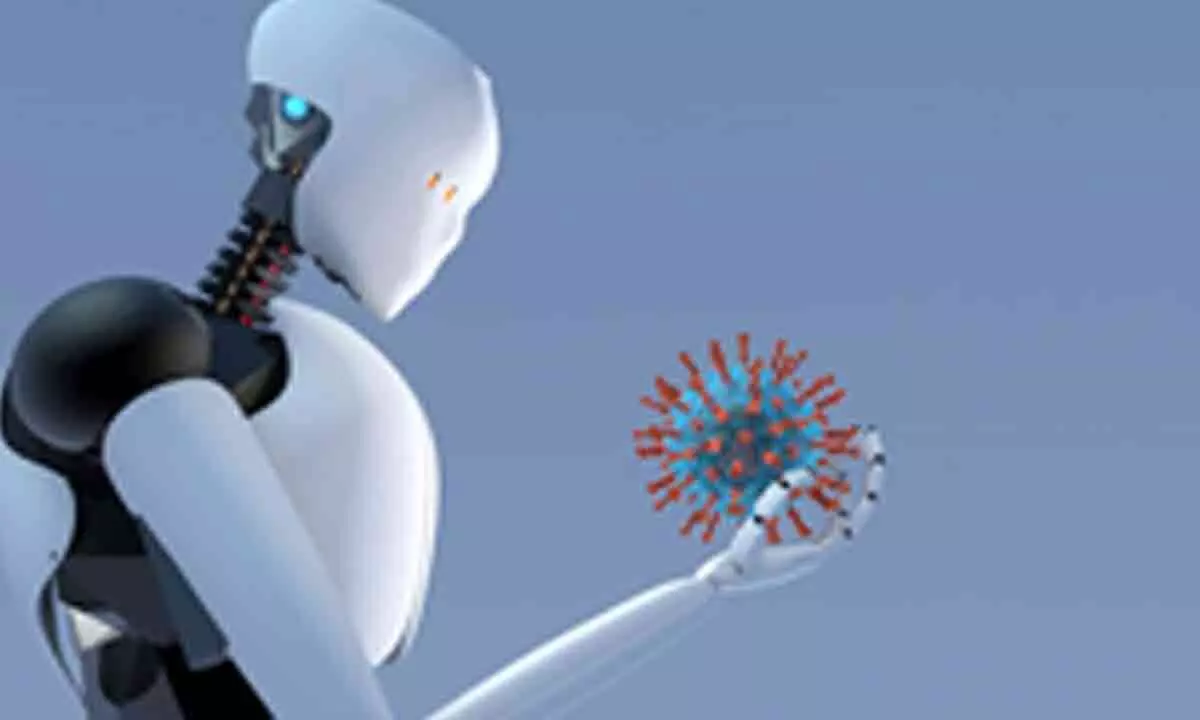Live
- Rekha gets emotional as she shares a heartfelt moment with Big B's grandson Agastya Nanda
- Senior Cong leader EVKS Elangovan passes away in Chennai
- CID's Counter Intelligence raids multiple places in J&K’s Anantnag, Kulgam districts
- India's growth on resilient trajectory, equity markets in consolidation phase
- KJo on 23 years of ‘Kabhi Khushi Kabhie Gham’: One of those pinch me moments
- WPL 2025 auction: Nandini, Kamalini set to be most sought-after names
- MP CM to inaugurate Sarsi resort in Shahdol, 200-bed hospital in Mauganj today
- TGPSC makes arrangements for Group-2 exams to be held tomorrow
- WPL 2025 Auction: When and where to watch, date, time, live streaming, venue
- Japan: Citizens protest US military-related sexual violence
Just In

Using an Artificial Intelligence (AI) system, scientists may now have the beginning of answers to why does SARS-CoV-2, the virus behind the disease, cause severe symptoms in some patients, while many other Coronaviruses don't?
New York : Using an Artificial Intelligence (AI) system, scientists may now have the beginning of answers to why does SARS-CoV-2, the virus behind the disease, cause severe symptoms in some patients, while many other Coronaviruses don't?
The team from University of California Los Angeles (UCLA) explored a way that Covid-19 turns the immune system -- which is crucial for keeping people alive -- against the body itself, with potentially deadly results.
Using novel AI system, the study appearing in the journal Proceedings of the National Academy of Sciences, scanned the entire collection of proteins produced by SARS-CoV-2 and then performed an exhaustive series of validation experiments.
The scientists found that certain viral protein fragments, generated after the SARS-CoV-2 virus is broken down into pieces, can mimic a key component of the body's machinery for amplifying immune signals.
Their discoveries suggest that some of the most serious Covid-19 outcomes can result from these fragments overstimulating the immune system, thereby causing rampant inflammation in widely different contexts such as cytokine storms and lethal blood coagulation.
"What we found deviates from the standard picture of viral infection," said Gerard Wong, Professor of bioengineering at the UCLA.
"The textbooks tell us that after the virus is destroyed, the sick host 'wins,' and different pieces of virus can be used to train the immune system for future recognition. Covid-19 reminds us that it's not this simple.
"For comparison, if one were to assume that after food gets digested into its molecular components, then its effects on the body are over, it would be very liberating; I wouldn't have to worry about the half-dozen jelly donuts I just ate. However this simple picture is not correct," Wong said.
The team found SARS-CoV-2 fragments can imitate innate immune peptides, a class of immune molecules that amplify signals to activate the body's natural defenses.
Peptides are chains of amino acids like proteins, only shorter. These immune peptides can spontaneously assemble into new structures with double-stranded RNA, a special form of a molecule essential for building proteins from DNA, typically found in viral infections or released by dying cells.
The resultant hybrid complex of the immune peptides and double-stranded RNA kicks off a chain reaction that triggers an immune response.
In addition to their AI analysis, the researchers used state-of-the-art methods for elucidating nano-scale biological structures and conducted cell and animal-based experiments.
Compared to relatively harmless Coronaviruses that cause the common cold, the team found that SARS-CoV-2 harbours many more combinations of fragments that can better mimic human immune peptides.
Consistent with that, additional experiments with multiple cell types all consistently show that fragments of the SARS-CoV-2 Coronavirus prompt an amplified inflammatory response compared to those from a common cold Coronavirus.
Likewise, experiments with mice show that fragments from SARS-CoV-2 lead to huge immune response, especially in the lungs, the researchers said.

© 2024 Hyderabad Media House Limited/The Hans India. All rights reserved. Powered by hocalwire.com






